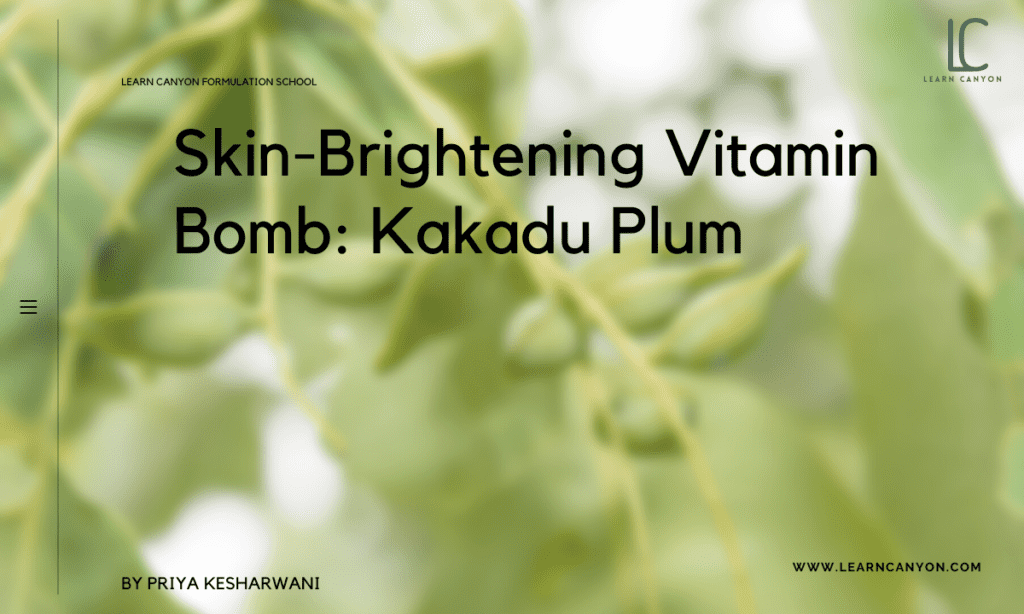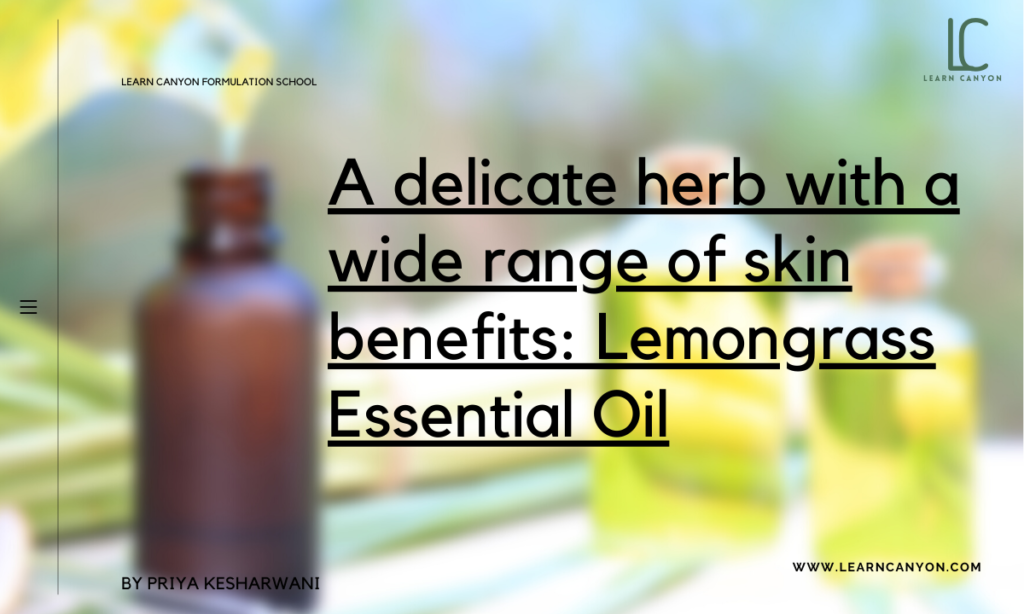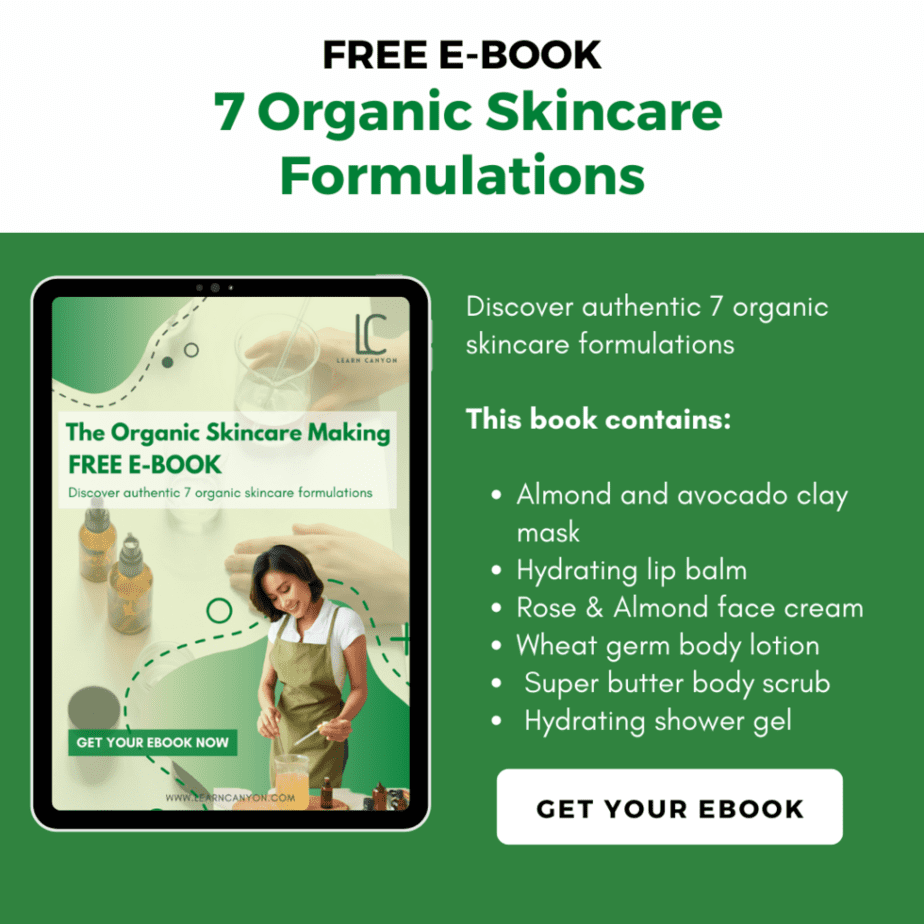
Lemongrass (Cymbopogon citratus) leaf essential oil

Lemongrass is a delicate herb with a wide range of skin and health benefits.
Lemongrass was probably used as a flavour in your cooking and beverages. Lemongrass leaves, for example, are frequently used in herbal teas as a “lemon” flavour.
Lemongrass essential oil, on the other hand, has become one of the most popular essential oil categories in the cosmetics industry. Oil offers a lot of advantages, but why is it so popular?
What is lemongrass leaf essential oil?
Lemongrass/Cymbopogon is one of about 55 grass species in the Cymbopogon family. Lemongrass is a tropical plant native to Africa, Asia, and Australia. It belongs to the Poaceae family (the same as Citronella) and is also known as Cymbopogon.
The delightful lemon-like aroma comes from crushing the leaves of this plant in your hands. Lemongrass essential oil is obtained by steam distilling these leaves.
| What is it? | Lemongrass Essential Oil is extracted by steam distilling fresh or partially dried Lemongrass leaves. |
|---|---|
| INCI | Cymbopogon citratus leaf oil |
| Appearance | Yellow to amber and exudes a fresh |
| Texture | Thin, watery viscosity |
| Recommended Usage | 1-10% |
| Solubility | Insoluble |
| Melting point | NA |
| Boiling point | NA |
| pH | NA |
| Aroma | Aroma is citrusy, sweet, and grassy. |
| Why do we include it in formulations? | Astringent, Deodorant, Tonic, Anti-microbial |
| How to work with it? | Include during the formulation's cool down phase, and prevent heating if as all possible. |
| Applications | Due to its Citral content, which is known to have antibacterial qualities, Lemongrass Oil can remove or restrict the growth of dangerous microorganisms. |
| Absorption rate | NA |
| Strength | Lemongrass is a long-lasting deodorant that is effective, affordable, and eco-friendly. |
| Weaknesses | Irritation and burning: Before applying oils to the skin, dilute them with a carrier oil. |
| Substitution | Chamomile, ylang-ylang and lavender |
| How to store it? | Stored in a cool, dark and dry place. |
| Shelf life | Essential oil of lemongrass has a two-year shelf life. |
| Type of ingredient | Essential oil |
|---|---|
| Main benefits | Lemongrass essential oil contains limonene, which helps to naturally brighten the skin. |
| Who should use it | All skin types can use it. |
| How often can you use it? | On alternating days, use |
| Works well with | Cedarwood, sandalwood, lavender, lemon, and helichrysum. |
| Doesn't work with | No known interaction. |
| How to use | When the formulation is cooling down, this ingredient is added. |
Mechanisms of action
Neral (31.5%), citral (26.1%), and geranyl acetate(2.27 % ) are the main components of lemongrass essential oil. Citral is an anti-inflammatory chemical found in lemongrass.
Antioxidants are beneficial to your health since they help to neutralise free radicals that might harm your skin. Organic lemongrass essential oil, as a natural antioxidant, is another defender in the fight against free radicals!
Benefits of lemongrass leaf essential oil
Did you know that including Lemongrass essential oil into your daily regimen will help your skin, hair, and general health? Let’s take a look at some of the oil’s most well-known applications and advantages.
- The oil provides a variety of skin-beneficial qualities. Lemongrass oil is recognised for improving overall skin texture by cleansing and detoxifying the skin and pores as well as removing excess oil.
- The oil’s antioxidant capabilities help to neutralise free radicals and promote skin elasticity. Not only that, but it also aids in the prevention of acne-causing bacteria from forming.
- This oil’s antibacterial characteristics make it useful for mending bruises and minor wounds. It cleans and disinfects the wound while also assisting with the healing process.
- It’s also a natural astringent, which tones the skin, gives it a natural glow, and strengthens the skin structure at the same time.
- Lemongrass essential oil, like any other essential oil, is normally mixed with a carrier oil or cream and applied to the face or body to make it seem fresh and rejuvenated.
- Lemongrass essential oil has anti-inflammatory effects, which means it can help with redness, inflammation, itching, and swelling. It is frequently used in cosmetics to generate soft, toned, and luminous skin because of its antibacterial and astringent characteristics.
Side effects of lemongrass leaf essential oil
Skin sensitivity is one of the lemongrass essential oils’s adverse effects (bright red rashes on light skin and darker areas on dark skin). Furthermore, lemongrass is more likely than other essential oils to produce allergic reactions in humans.
How to use it in formulation?
You might use it in your toner or moisturiser as a cosmetic ingredient. To make a toner, mix 100 mL witch hazel with 2 mL lemongrass essential oil. Blend the ingredients together and apply with a soft brush to the face.
Add a few drops of this oil to heated Shea butter and stir well to use as a moisturiser. Apply it to your skin in any area where you want to hydrate it. When the formulation is cooling down, this ingredient is added.
Works Well With Other Ingredients
Citrus, wood, mint, and herbaceous essential oils, such as cedarwood, sandalwood, lavender, lemon, and helichrysum, combine well with lemongrass essential oil.




